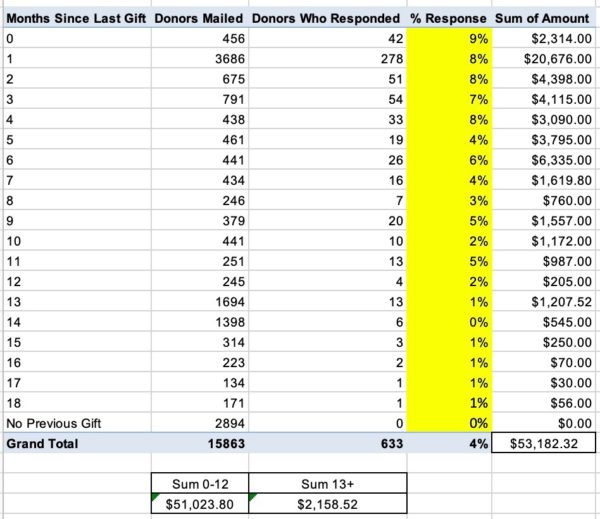Last week I blogged on a type of story about the “toxic parent.” It’s a specific story type from fundraising for children that reduces how much money an appeal or e-appeal will raise.
But the “toxic parent” is an example of a larger lesson to be learned in storytelling in fundraising…
What To Watch Out For
Watch out for anything in your fundraising that takes the reader’s focus off of what’s happening today and what the reader can do about it.
What To Do
In the story you tell, here are the most important elements, in order of importance:
- The problem your beneficiary faces
- What will happen if the problem is not solved
- What will happen if the problem IS solved
Notice that HOW the beneficiary came to be in the situation – how they came to have the problem – is not even on that list!
I realize this is super conceptual, so here are some examples…
Example Time
You see a story like the following all the time in fundraising for refugees.
“There was an amazing couple in Syria. They were both doctors. But because of the geopolitical situation, the bombings started. One parent was killed, the other escaped with the children and an uncle.
Their town was turned into dust and rubble, the color of sandstone at sunset.
Their months-long journey to the refugee camp was arduous. They had to leave with only what they could carry. Though one of the things they carried was the key to their house – because they dream of returning home someday.
They are living in a refugee camp. Will you please send them aid like medicines and clean water?”
It’s an incredible story… but it’s not the right story to tell when asking the donor to send them medicine and clean water.
90% of that story is about how the beneficiary came to be in the situation. Precisely 0% of it is about how the beneficiary needs the donor’s help today.
The Primary Purpose of Your Appeal Story
- The primary purpose of the story in your appeal is to establish the need for whatever the donor can do today.
Of course, telling a story has other purposes, too. Getting the reader emotionally involved, for instance. But if your story gets the reader emotionally involved but doesn’t establish the need, you’re losing money and donors.
The story above is a good example of that. It doesn’t establish the need for medicines and clean water. It focuses on the part of the story that the donor can do nothing about. That means it’s the wrong story.
Or more precisely, it’s the wrong part of the refugee family’s story.
Here’s what would raise more money: focus the story on the family’s need for medicine and water now. For instance, talk about the Uncle’s heart condition and how he can’t get his regular meds – but the donor can help provide them.
Or focus the story on how the kids keep getting sick from the contaminated water in the refugee camp – but the donor can provide clean water.
What To Do, Part II
Go scan your fundraising. Look at the stories you tell. Do the stories you tell focus on the need that a beneficiary is facing today?
Or are they focused on how the beneficiary arrived in their current situation? Or are they focused on something that the donor can do nothing about?
If any of those are true for you, focus the story in your next appeal on the need being faced right now.
This might feel like you’re telling the wrong story. Or that you’re only telling part of the story.
But you’ll be focusing on the part of the story that the donor can help. You’ll be illustrating what needs to be done today and how the donor can do it. And you’ll be thrilled by how much more money comes in!










